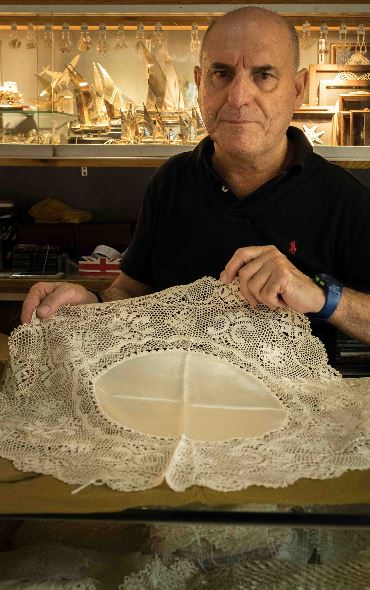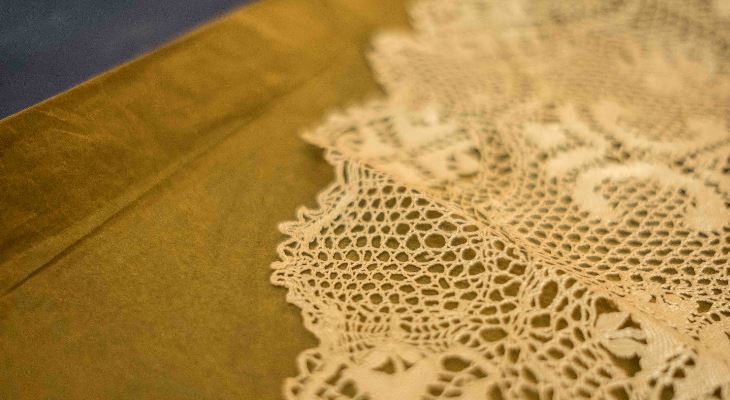This traditional bizzilla merchant will make you appreciate the dying art of handmade lace
Joseph Busuttil refuses to sell bizzilla (Maltese lace) which has been made by a machine. Having been collecting and merchandising handmade bizzilla for the past four decades or so, his appreciation for the minute details of handwork and effort that go into each individual piece has set a standard of beauty and quality which isn’t quite comparable.

Joanna Demarco
“I do this work because I love lace,” he says. “However, bizzilla sells slowly. People will want beautiful bizzilla but are not willing to pay for it, not knowing how much time actually goes into making one of these,” he maintains, pointing to a bookmark costing about €15, going on to explain that it would take an artisan between two to three days to make such a piece. “Look how fine it is, look at the details,” he instructs, as he brings the piece of bizzilla closer. “Quality is quality, and I try to get the best quality. I have pieces which aren’t even made anymore. You do find some which would be cheaper, but it would not be the same as this here.”
Opened by Joseph's grandfather a century ago, Joseph Busuttil Hand Made Maltese Lace sells lace primarily from Gozo, made out of linen or silk. Mr Busuttil recalls how there was a time when his father would go and wait for the Gozo ferry to come in, to make sure he gets lace straight away due to fierce competition. However, that was a time when there was a greater demand for the craft.
Back in the day, a beautiful piece of bizzilla was often the centrepiece upon each family table or mantlepiece. Nowadays, it is no longer a sought-after means of decoration. With a decrease in demand came a decrease in shops, and Mr Busuttil laments on how many shops are nowadays selling machine-made bizzilla, labelling it handmade. “That is one of the pities,” he says. “There are people who say that the lace they are selling is handmade but it would be made with a machine. It looks like mine, which is genuinely handmade, but priced in such a way to rip people off,” he argues.
Nowadays, he fears that the trade is slowly dying, with only a few people left making handmade bizzilla, and not passing down the trade to younger generations.

“There are differences between the old bizzilla and the one that is being made today,” he believes, pointing to a number of features within the threading that are unique to bizzilla from yesteryear. “Before, the quality of the thread was much better. The thread also used to be thinner, so it was even more difficult to create such work. And when it comes to patterns and details, there are certain ones which just don't exist anymore. You cannot find the people to make them!"
Without a demand for the craft, and with the only remaining artisans decreasing in number, what does the future look like for handmade bizzilla, we wonder?